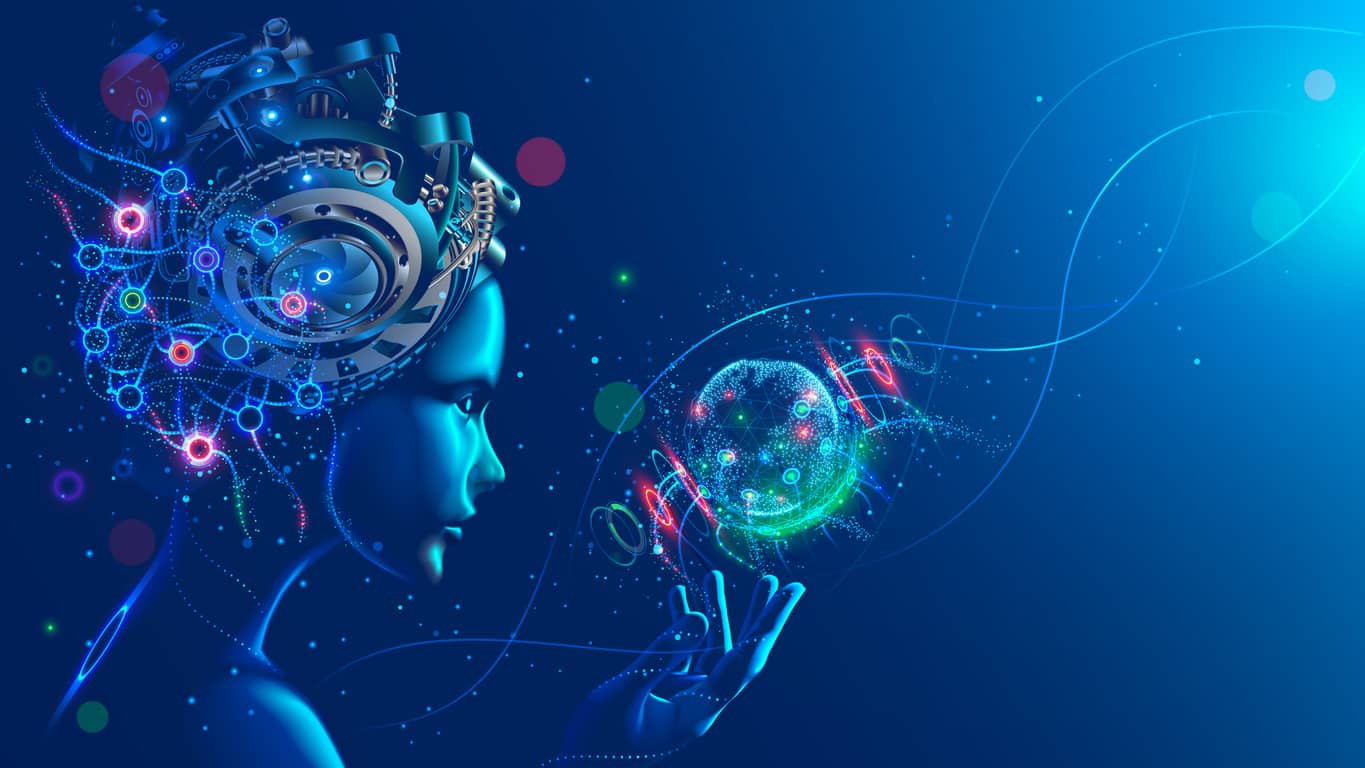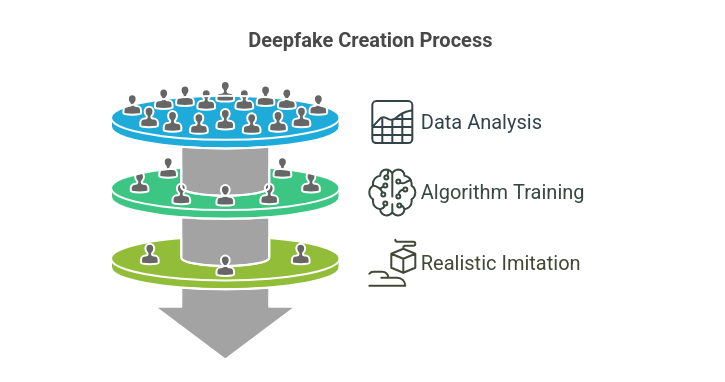- What is Artificial Intelligence?
- What are the 3 types of Artificial Intelligence?
- Artificial Intelligence Examples
- What exactly is Artificial General Intelligence (AGI)?
- What are the requirements of artificial general intelligence?
- Can AI ever achieve general intelligence?
- How experts foresee the future of AGI?
- Conclusion
Humans have been dreaming of creating artificial intelligence for decades. But synthesizing intelligence only began in earnest in the late 1950s, when a dozen scientists attended two months of the workshop in Dartmouth College, NH, to create machines that could “use language”. This workshop was known as the official beginning of AI history.
The artificial system has split into two different sections: artificial narrow intelligence, what we have today; and artificial general intelligence, what we hope to achieve.
To enable artificial systems, machines must learn from experience, adjust to new inputs and perform human-like tasks is the overarching goal for artificial general intelligence.
Currently, Most AI examples that you hear about- from chess-playing computers,self-driving cars to understanding speech or text delivered in natural language rely on deep learning and natural language processing. However, existing AI systems perform assigned tasks perfectly but cannot do any task which is not assigned with the same perfection.
What is Artificial Intelligence?
- Artificial intelligence (AI) is a branch of computer science involved in building smart machines capable of performing human-like tasks.
What are the 3 types of Artificial Intelligence?
Artificial Intelligence is categorised based on the capacity to mimic human characteristics. Using these characteristics for reference, all artificial intelligence systems fall into one of three types:
- Artificial narrow intelligence (ANI)- Narrow range of abilities.
- Artificial general intelligence (AGI)-On par with human capabilities.
- Artificial superintelligence (ASI)-More capable than a human.
Artificial Intelligence Examples
- Smart assistants (like Siri and Alexa)
- Disease mapping and prediction tools
- Manufacturing and drone robots
- Optimized, personalized healthcare treatment recommendations
- Conversational bots for marketing and customer service
- Robo-advisors for stock trading
- Spam filters on email
- Social media monitoring tools
- TV show recommendations from Spotify and Netflix
What exactly is Artificial General Intelligence (AGI)?
Artificial General Intelligence is on-par with human capabilities, i.e. AGI system can perform any task that a human can. However, AGI systems can perform the task with greater efficacy than humans only for a particular/single function assigned to them, while they have zero capability to do any task which is not assigned to them. On the contrary, a human performs the task with less proficiency but can perform a broader range of functions than any of the existing AI applications of today.
To simply put, AGI is a kind of artificial intelligence we see in the movies, like the robots from Westworld or star trek: The Next Generation. AGI is a machine with general intelligence much like a human being, to solve any problem.
Also Read: Artificial Intelligence Documentary
Artificial General Intelligence / Deep AI/ Strong AI
Artificial general intelligence is also called strong AI or deep AI. This is a concept of the machine with general intelligence that mimics human intelligence, with the ability to think, understand, learn and apply its intelligence to solve any problem as humans do in any given situation.
Strong AI uses the theory of mind AI framework not to replicate or simulate, it’s about training machines to understand humans to differentiate needs, emotions, beliefs, and thought processes.
But, all these aren’t easy! AI researchers and scientists need to find a way to make machines conscious, programming a full set of cognitive abilities.
To give you an example, Fujitsu-built K, built one of the fastest supercomputers also a notable attempt at achieving strong AI, system took 40 minutes to simulate a single second of neural activity. So, this makes us understand that stone AI is difficult to achieve in our foreseeable future.
What are the requirements of artificial general intelligence?
Defining artificial general intelligence is very hard. But there are several characteristics that AGI systems should have as you see in all humans.
- Common Sense
- Background Knowledge
- Transfer Learning
- Abstraction
- Causality
Here are few challenges that the AGI system can see:
Challenge 1: What would happen if you removed the bat from the scene?
This is a challenge that requires the AI to have an understanding of causality. It should also be able to look for alternative scenarios to make changes to the scene.
![100+ Cricket Wallpaperss [HD] | Download Free Images & Stock Photos On Unsplash](https://images.unsplash.com/photo-1595210382051-4d2c31fcc2f4?ixid=MXwxMjA3fDB8MHxzZWFyY2h8MTN8fGNyaWNrZXR8ZW58MHx8MHw%3D&ixlib=rb-1.2.1&w=1000&q=80)
Challenge 2: Look at this question, “Anna tried to reach her aunt on the phone, but she didn’t answer.”
Answer the following questions:
- Who didn’t answer the phone?
- Were Anna and her aunt in the same room?
AGI system requires basic knowledge about telephone conversations. Most people know about remote communications, therefore they can assume many things that are missing in the sentence, like an unclear antecedent to the pronoun “she.”
Challenge 4: Guess the next image in the following sequence.
Source: Arxiv.org
Solving these simple and straightforward challenges in a general way is still beyond today’s AI systems.
So, what is the inference? I think it is not a cakewalk to solve artificial general intelligence problems alone.
Can AI ever achieve general intelligence?
As we have seen in our earlier discussion, the AI system can’t be achieved AGI now, as we don’t have complete knowledge of our brains, it is hard to model and replicate it.
However, theoretically replication human brain using algorithms is possible, as suggested by the Church-Turing thesis–that given infinite time and memory, any kind of problem can be solved algorithmically. Emerging artificial general intelligence companies are putting various efforts in generalizing the capabilities of AI algorithms and upgrading AI systems.
Scientists are involved in various efforts aimed at generalizing the capabilities of AI algorithms and believe that the path forward is hybrid artificial intelligence, a combination of neural networks and rule-based systems.
But some other scientists or rescuers believe that pure neural network–based models will eventually develop reasoning capabilities.
Will any of these approaches bring us closer to AGI, or will they open more roadblocks? Time will tell. But what’s for sure is that there will be a lot of exciting experiments along the way.
What is the future of AI?
This is the burning question.
Are we capable of achieving AGI? Optimistic experts believe AGI and ASI are possible, but it’s hard to decide how far away we are from realizing these levels of AI.
You can take a look at some of the myths and fact about AGI and ASI
Source:futureoflife.org
How experts foresee the future of AGI?
According to AI expert Stuart Russell:
“There are still breakthroughs that have to happen before we reach the AGI stage. One example is the ability to understand the content of language so we can translate between languages using machines… When humans do machine translation, they understand the content and then express it. And right now machines are not very good at understanding the content of language. If that goal is reached, we would have systems that could then read and understand everything the human race has ever written, and this is something that a human being can’t do”
Late physicist Stephen Hawking states that:
“If AI itself begins designing better AI than human programmers, the result could be machines whose intelligence exceeds ours by more than ours exceeds that of snails.”
SpaceX CEO Elon Musk has warned that:
“AGI is humanity’s biggest existential threat. Efforts to bring it about, he has said, are like “summoning the demon.”
According to Diego Klabjan, a professor at Northwestern University:
“Currently, computers can handle a little more than 10,000 words. So, a few million neurons. But human brains have billions of neurons that are connected in a very intriguing and complex way, and the current state-of-the-art [technology] is just straightforward connections following very easy patterns. So going from a few million neurons to billions of neurons with current hardware and software technologies — I don’t see that happening.”
Conclusion
Artificial Intelligence will take a couple of decades to reach the artificial general intelligence stage and superintelligence stage. However, the transition has begun, and most businesses are incorporating artificial intelligence to better sales, forecasts and also gives new growth opportunities. There is no doubt that the Artificial Intelligence future is an exciting career. So, if you wish to learn artificial intelligence take up our PGP Artificial Intelligence Course that makes you job ready and power ahead of your career









